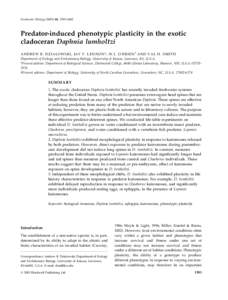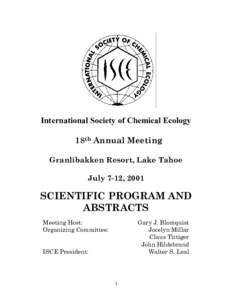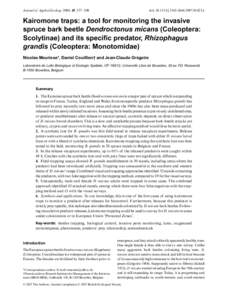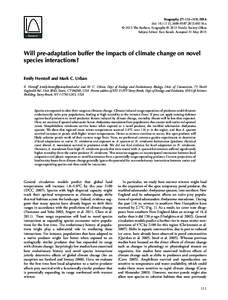 Date: 2014-10-25 14:57:22Taxonomy Daphnia lumholtzi Daphnia pulex Daphnia Kairomone Glassworm Antipredator adaptation Predation Phasmatodea Branchiopoda Phyla Protostome | |  Freshwater Biology[removed], 1593–1602 Predator-induced phenotypic plasticity in the exotic cladoceran Daphnia lumholtzi ANDREW R. DZIALOWSKI, JAY T. LENNON*, W.J. O’BRIEN† AND VAL H. SMITH Department of Ecology Freshwater Biology[removed], 1593–1602 Predator-induced phenotypic plasticity in the exotic cladoceran Daphnia lumholtzi ANDREW R. DZIALOWSKI, JAY T. LENNON*, W.J. O’BRIEN† AND VAL H. SMITH Department of Ecology
Add to Reading ListSource URL: www.indiana.eduDownload Document from Source Website File Size: 257,76 KBShare Document on Facebook
|






 Freshwater Biology[removed], 1593–1602 Predator-induced phenotypic plasticity in the exotic cladoceran Daphnia lumholtzi ANDREW R. DZIALOWSKI, JAY T. LENNON*, W.J. O’BRIEN† AND VAL H. SMITH Department of Ecology
Freshwater Biology[removed], 1593–1602 Predator-induced phenotypic plasticity in the exotic cladoceran Daphnia lumholtzi ANDREW R. DZIALOWSKI, JAY T. LENNON*, W.J. O’BRIEN† AND VAL H. SMITH Department of Ecology